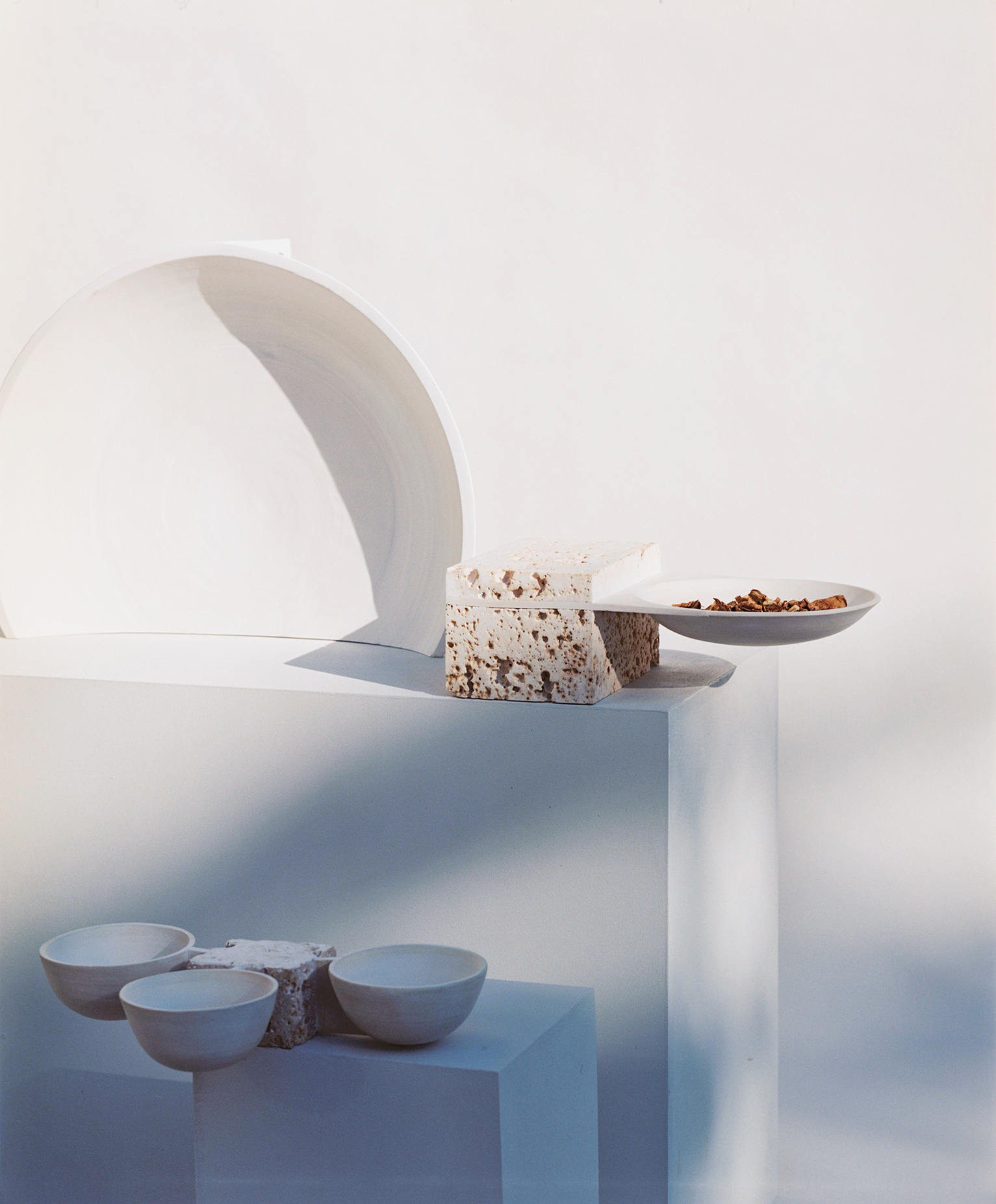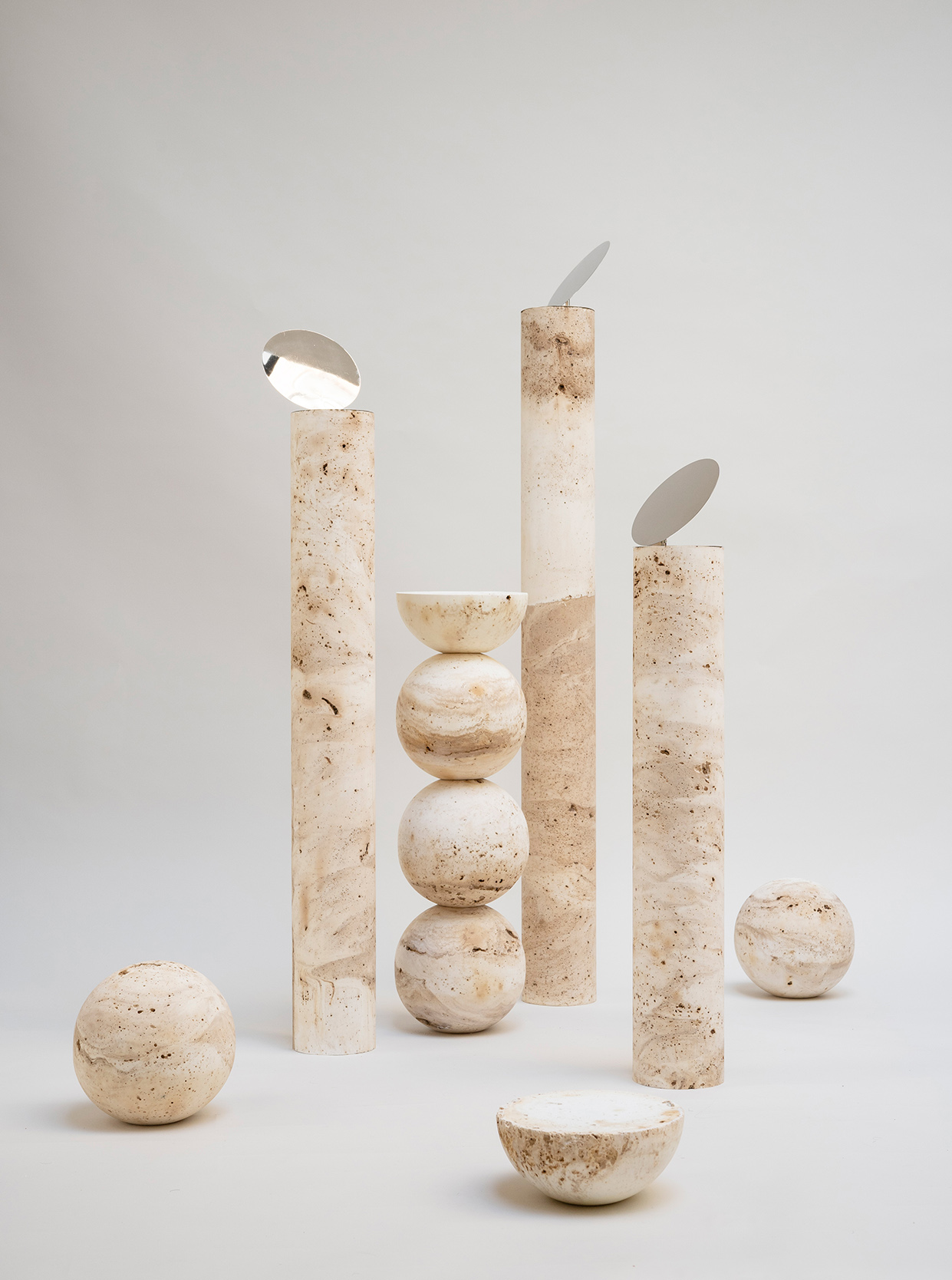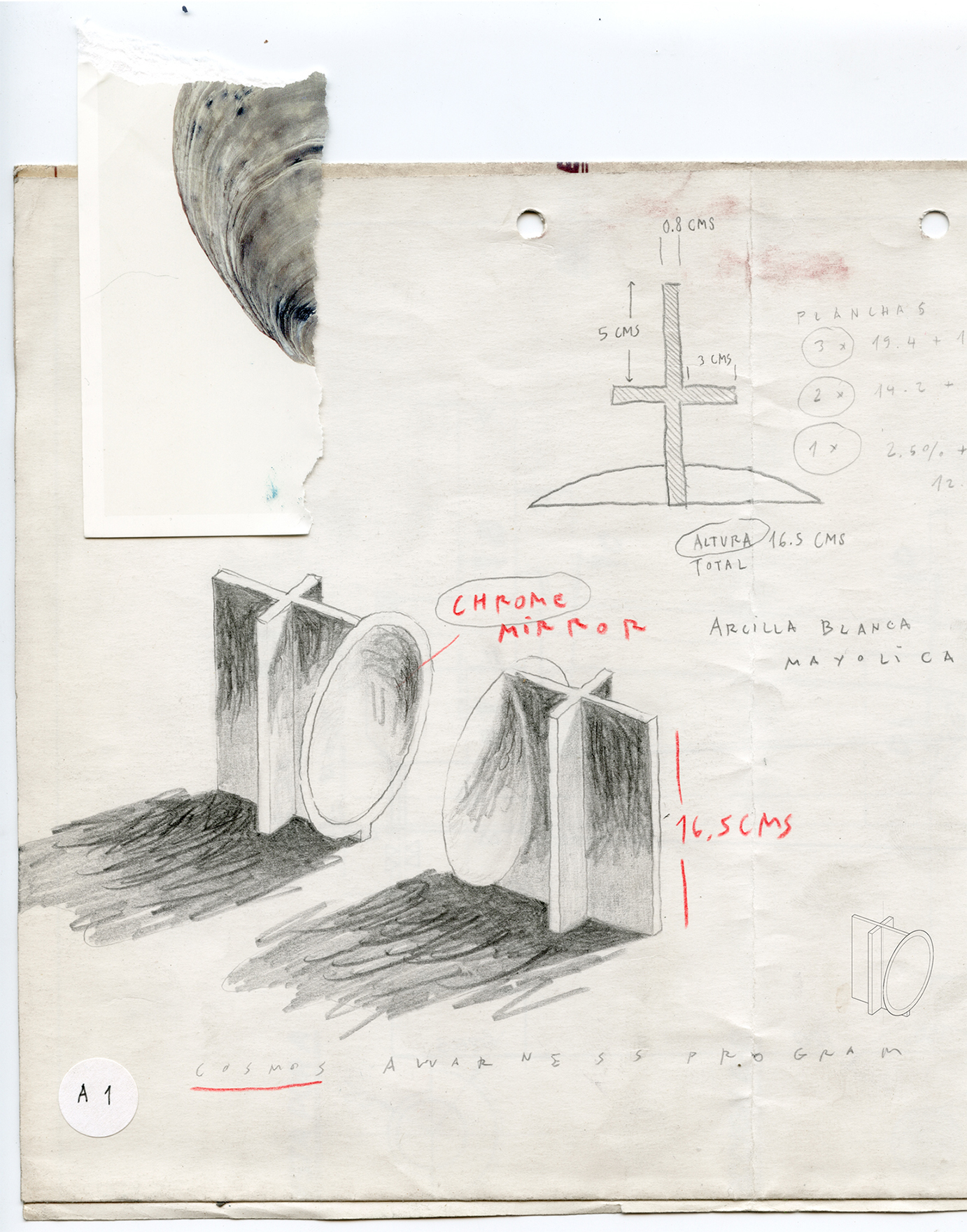Studio Turbina founders Minerva Capdevila and Mateo Fumero talk to Friends of Friends about combining sculpture and research and why a thorough creative process is the answer to slowing-down time.
Stones and rocks share an ancient relationship with rituals and spirituality. Stacking stone mounds, placing stones on graves, erecting them in circles (think of Stonehenge), but also holding on to one as a “Handschmeichler” or worry stone, or using them for healing purposes. Far from providing clear answers, such practices reflect something fundamental about human experience: the yearning to frame the unknown and grasp the elusive nature of time.
Seeing design and sculpture as a privileged means for addressing this yearning, Barcelona-based art and design studio Turbina explores concepts of time and cosmos in connection with the “implicit symbology” and distinct language of chosen materials. From modular pieces inspired by litholatry (the worship of stones) to kinetic sculptures, and chunky, monolith-like bookends, each collection inspires reflection while seducing with its texture and physicality.
Turbina’s founders, Minerva Capdevila and Mateo Fumero met in a self-managed, artistic cohabitation and connected over similar concerns with volume and materials. Their partnership, as well as their sentimental relationship “came about naturally, as a way of living and understanding things”.
From their dry cleaner’s-turned-workshop in the neighborhood of Sants, their contemplative practice reminds us that in an ever faster spinning world, tending to natural objects and giving into their symbology can sometimes provide unexpectedly concrete guidance for grappling with life’s big, abstract questions.



“We like to consider the language of materials, how each material has an ancient, implicit symbology that is somehow inscribed in our collective unconscious. Viewed in this way, materials can act as clues or triggers of the whole set of ideas associated with them.”
-
Could you tell us a little bit about your creative process?
We usually start from a general idea that includes a concept, materials, and shapes. At first, this idea is not defined—it is in our heads, spread over a multitude of fuzzy images. We try to apply a method that helps us come up with ideas, relate shapes and materials with sensations, so eventually, we print some images, arrange them with material tests, and keep all of this under our eyes while we discuss the new project. A key aspect of the process is that, because we are a team of two, we are forced to maintain a clear dialogue on sometimes very subtle, volatile aspects. The processes of production of the pieces are very long and thorough, every time we embark on a project, it’s a long tunnel in which we deal with many unforeseen events. Sometimes the material doesn’t act as we expected or the finishing doesn’t turn out as desired, which leads to decisions that affect the final result.
-
Which factors usually inspire your choice of materials?
We like to consider the language of materials, how each material has an ancient, implicit symbology that is somehow inscribed in our collective unconscious. Viewed in this way, materials can act as clues or triggers of the whole set of ideas associated with them. We experiment with different types of materials to reach the final result of the pieces, mainly clays and terracotta, natural stone, brass, and Stone Cast.
-
A running theme of your work appears to be the role of objects in manifesting the passage of time. When did you first become interested in matters of temporality?
The French novelist Marguerite Yourcenar said that Time is a great sculptor. Naturally, time has been part of sculpture since the very beginning. The idea of permanence contained in some materials is directly related to the way human beings deal with the idea of time. Time is elusive and difficult to understand, but at the same time manifests in the objects around us and is part of everyday life.
“The process behind all our projects is very slow and by extending the moment of creation, we discovered that we are able to “slow-down time”
-
Pendulum Clock and Disc Clock don’t feature traditional time units (hours, minutes, seconds). What’s the story behind this choice?
story behind this choice?
These clocks only indicate the passage of time [as opposed to the time of the day or a given moment] to inspire reflection: in a past that is already a memory, a present that fades instantly, and a future that is imagination … What, then, is time? And to quote St. Augustine, “If no one asks me, I know; if I wish to explain to him who asks, I know not.” “Neither time past nor future, but the present only, really is” (St. Augustine: Confessions, Book 11, transl. by J. G. Pilkington, Edinburgh 1867) These words highlight the abstract and paradoxical quality of time and are the reason for our interest in the subject.
-
What is something you learned about your own relationship with time through working with stones?
Some people say that, in late-modernity, time is collapsing or becoming irretrievably accelerated. We can not confirm this, but we think that immediacy describes our epoch very well. The process behind all our projects is very slow and by extending the moment of creation, we discovered that we are able to “slow-down time”.
-
Cosmos Awareness Program is described as a taxonomy project. Could you tell us a little bit about the idea behind this project and what sparked your interest in instrumentation that generates knowledge about the cosmos? Was there a particular instrument that inspired your research for this project?
The knowledge and the idea we [humans] have of the universe has affected centuries’ worth of philosophy along with the story of the reality in which we live. Instrumentation is key to this knowledge.
For a long time, we’ve been intrigued with the shapes, forms, and materials of all space instrumentation: radars, radiotelescopes, observatories, satellites, spacecraft … Ever since the space race in the `50s there has been a huge interest in objects with space exploration purposes. Scientists, architects, designers, and artists observed how technological innovations revolutionized manufacturing and got involved with these ideas. From the `50s until now, from the sci-fi future that never arrived all the way to our actual reality, we both continue to be very fascinated by this evolving imagery.



-
Are there any objects in your own household that have become the center of personal or shared family rituals?
Yes, we have many objects that are important to us at home and in the workshop. We are very aware of the power of objects and we implement it in our daily lives. We definitely connect with them beyond the usual utilitarian perspective, and we are very conscious of their symbolic charge. We have a lot of stones from special places, objects harvested from nature or from our travels, talismans, and memories. There’s a stone collection, plants, candles, special herbs for sorcery and rituals, and a big amount of boxes filled with dry leaves, branches, seeds, and scraps for our still life work. We also keep our creations visible, to relate with them and their energy on a daily basis.
Studio Turbina is a Barcelona-based art and design studio founded in 2018 by Minerva Capdevila and Mateo Fumero. Formerly a dry cleaner’s, the couple’s workshop and home is located in Sants, a neighborhood where abandoned, early 19th-century textile factories are being repurposed by independent manufacturers and artisans. Turbina’s work is characterized by a strong interest in materials and by a range of sculptural practices that respect the materials’ natural language and foreground its ancient symbology. To find out more about studio Turbina visit their evocative website or follow them on Instagram. And to continue reading about design and manufacturing check out our story about ceramicist Iris Roth or read about artist Analusia Corrigan thoughts on clay and mental health.
Interview: Amelie Varzi
Photography: Minerva Capdevila and Mateo Fumero (Studio Turbina)










